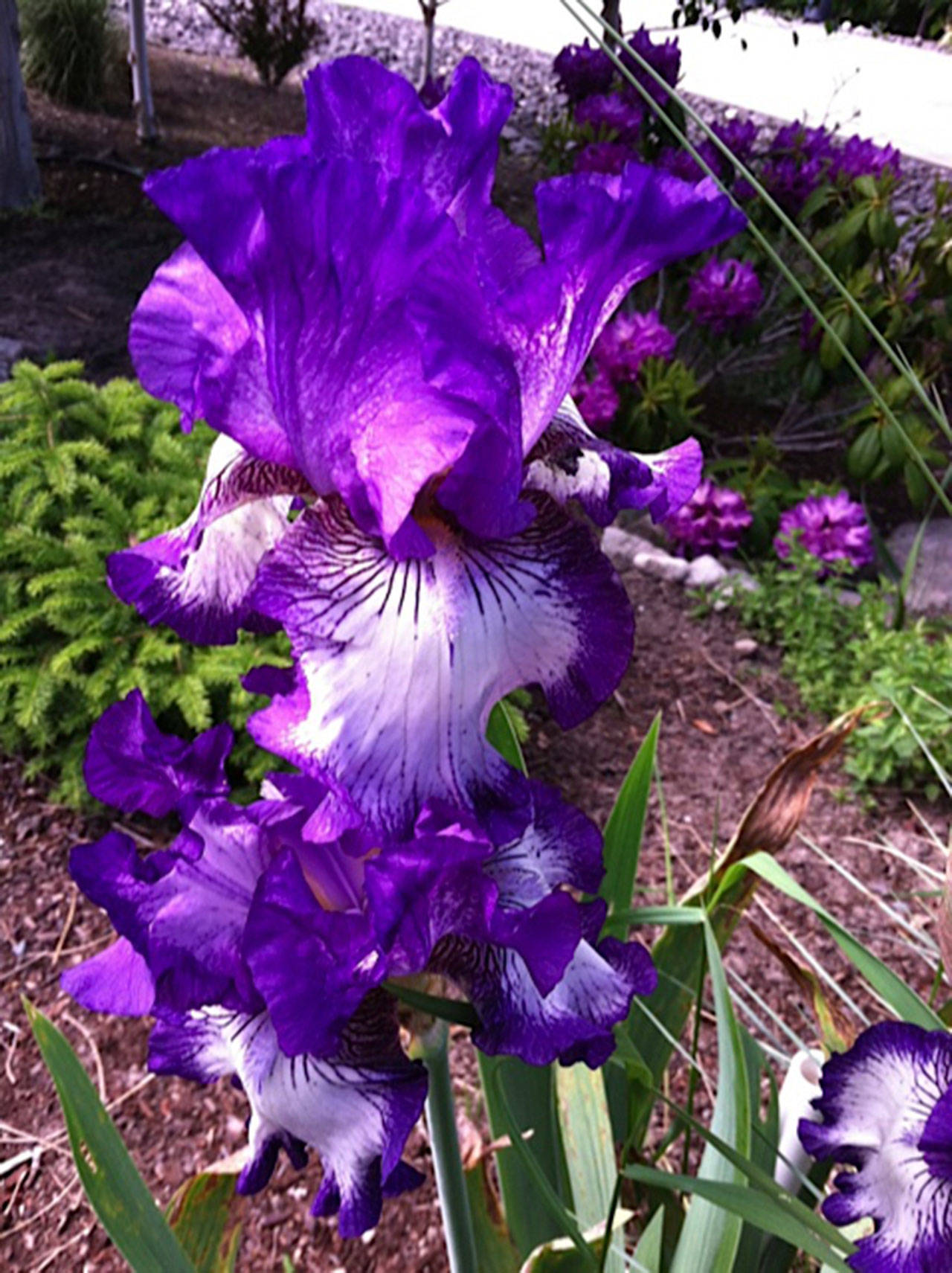Can you name the plant whose flower parts include the terms “standards,” “falls” and “beards” and, according to Greek mythology, was named after the goddess thought to be the messenger of love who walked on a Rainbow Bridge between Heaven and Earth? If you said “Bearded Iris” or “German Iris,” you are correct!
The iris (family name Iridaceae) has a very delicate scent. It typically blooms from the end of February through May. On close examination one sees the exquisite intricacy of the flower: six petals, divided into three standards and three falls, and, for bearded irises, each fall will have a beard.
Each flower part can be the same or a different color. When all of the flower parts are the same color, it is called a “self.” The color spectrum is virtually limitless and ranges from nearly luminescent to pale and demure. The semi-evergreen leaves are sword-shaped and grow in fan-shaped clumps.
The bearded iris has a fleshy underground stem called a rhizome. Rhizomes grow along the surface of the soil, sending leaf fans upward and roots downward from their growing end. During the heat of summer the rhizomes become hardened, protecting the resources within.
Rhizomes divide and multiply annually. Each rhizome flowers once and a new rhizome will develop behind the current season’s flower stem, or from buds along the rhizome’s length. This process provides the plant access to nutrients in new soil. Choose a location that allows the fan, which is the leading edge of the growth point to ‘march away’ from what will become the “spent” mother rhizome.
The iris plant is easy to establish and maintain. It is drought tolerant and can be grown directly in the landscape or in containers. Irises are available in different heights ranging from 8-30 inches tall. Shorter cultivars generally bloom earlier than taller cultivars.
As is true with most plants, the iris performs most dramatically when planted in well-drained soil. It prefers full sun but will perform in partial shade. Wet clay and heavily shaded conditions are the least desirable.
Long periods of wet weather in clay soil can soften and weaken the rhizome, allowing slugs or other pests to destroy the plant. The following planting and maintenance tips apply to both the bearded iris and the smaller Dutch iris (Iris x hollandica):
• When to divide: four to six weeks after flowering
• When to plant: June through September
• Location: Full sun with good drainage
• Soil: Well drained soil with pH of 6.8
• Depth to plant: Top of rhizome exposed with roots spread out and facing downward
• Distance apart: 12-18 inches (5-10 inches for Dutch Iris)
• Watering: Newly set plants need moisture but once established do not need to be watered
• Fertilization: Bone meal, superphosphate and 6-10-10 fertilizers are all effective. Apply lightly in early spring and a month after bloom
• Thinning old clumps: Thin or divide every three to four years
• General care: Keep beds clear and free of weeds. Cut off bloom stems close to the ground after blooming. Remove brown leaves.
Adding Iris to your landscape is an easy way to bring that special “touch of elegance.”
Judy English is a Washington State University-Certified, Clallam County Master Gardener.


